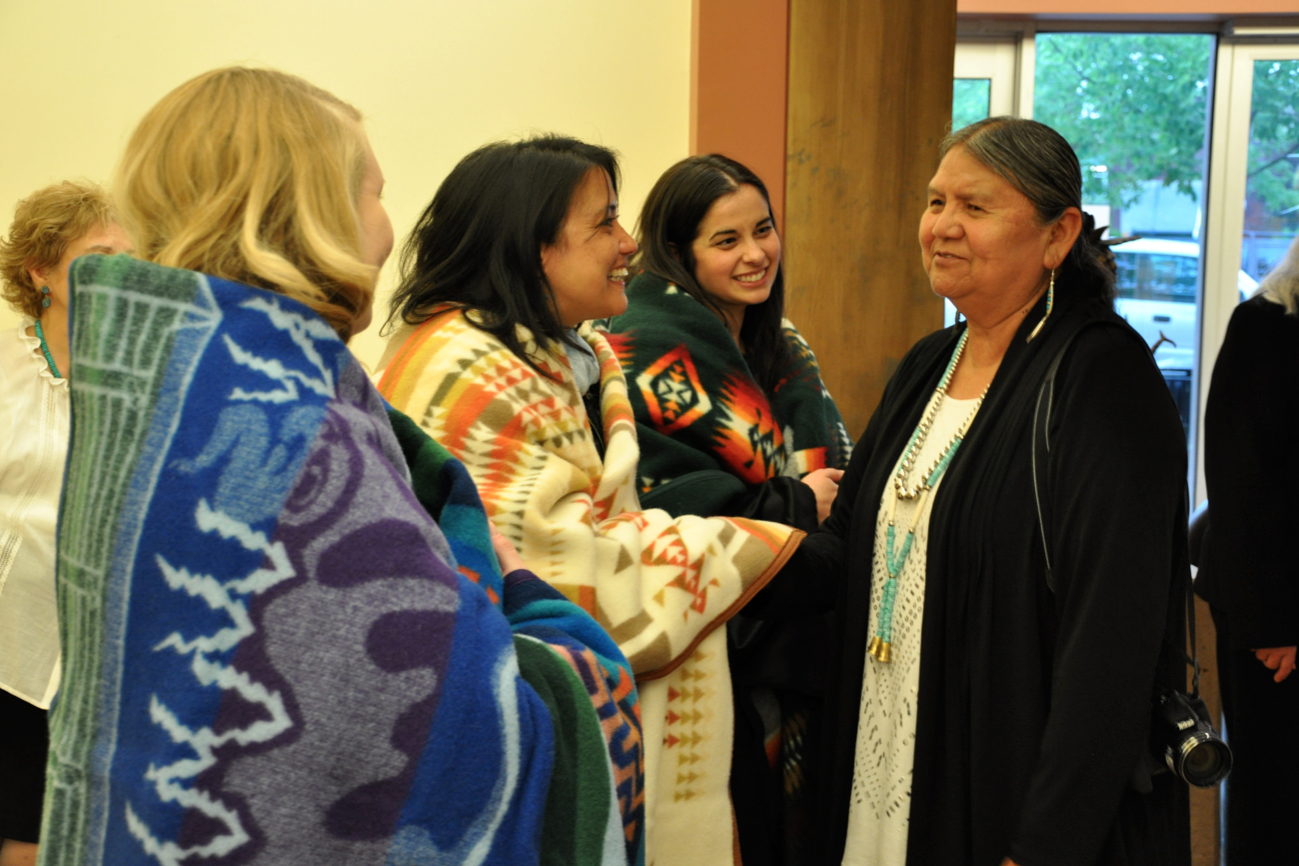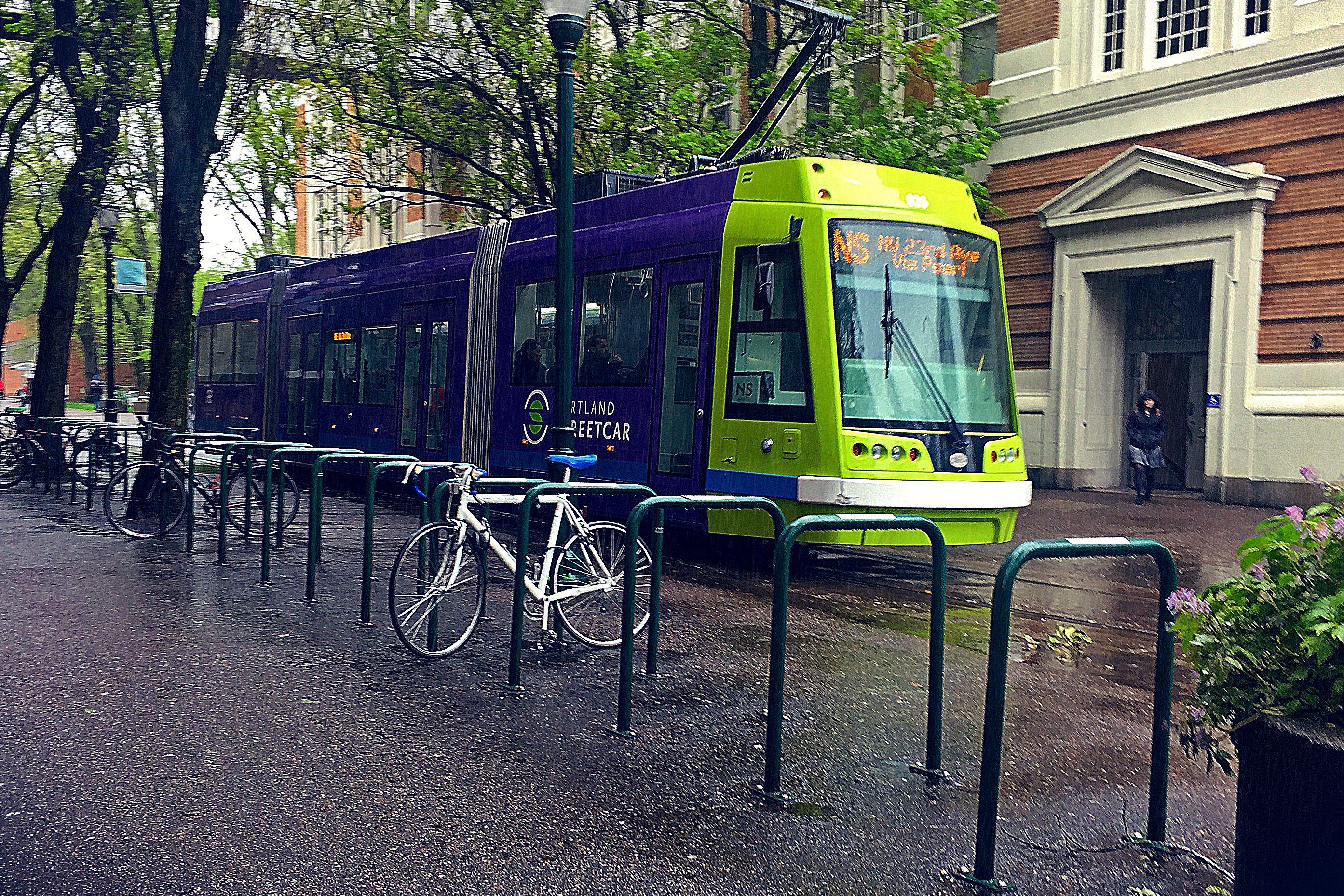The Portland metro area has the largest population of Native Americans in Oregon, and many Native American children attend public schools in Portland. What’s missing are Native American teachers. Currently, Native American teachers make up less than one percent of Oregon’s teaching workforce—something that a program at Portland State University is changing one cap and gown at a time.
The American Indian Teacher Program received a $1.2 million grant last month—the third of three grants since 2010 awarded by the Office of Indian Education, which is within the U.S. Department of Education.
The grant provides funding through 2020 for 15 Native American students wanting to achieve a master’s degree in either early childhood and elementary education or middle and high school education.
All students in the program, which this year is a cohort of seven, are members of a federal or state recognized tribe—a requisite for applying to AITP.
After completing either the one or two–year program through the Graduate Teacher Education Program at PSU, Native American students graduate with a teaching license—something that the program’s project director, Dr. Maria Tenorio, says is incredibly important.
“There was and there still is a dramatic need for Native American teachers across the United States, especially in Oregon. The hope is that the students, after graduation, stay in Oregon. That’s why we work closely with Oregon tribes,” said Tenorio, who has overseen the project since its inception.
A number of Oregon tribes had their government relationship terminated during the 1950s due to the Indian Termination Policy, which contributed to a significant loss of government funding which tribal nations have used to establish infrastructure on reservations for things such as health, education, social services, and fire safety.
Funding for education was particularly affected, so professionals like Tenorio feel that programs like AITP are opportunities to not only bring Native teachers back into public schools, but also to enable them to return to Oregon Reservation Schools and be role models for other tribal students.
Portland State’s program is competitive; every student who’s graduated has been hired, which Tenorio says means something back in D.C.
“Unfortunately, other programs who have received funding don’t have our same success rate,” Tenorio said. “Some students may have a tribal college experience for the first two years and transition into an institution of higher education which may not know how to support the indigenous group of students.”
One of the most critical aspects of the AITP program is its connection with tribal partners across Oregon, partners like the Confederated Tribes of the Grand Ronde, the Siletz, the Warm Springs, and the Umatilla.
As soon as education department staff at the different tribal nations hear that there’s funding available, they’ll start looking through files and folders of students who are getting ready to complete their bachelor’s degrees and send Tenorio their names.
Katy Holland, education specialist for the Confederated Tribes of Siletz Indians, is one of Tenorio’s points of contact.
“One of my jobs is to serve tribal members to attain a college education, to complete not just a B.A., but a master’s,” Holland said.
Tenorio also does a campus-wide search.
When students step into Tenorio’s office on PSU’s campus, they are immediately put at ease. Colorful weaves and art adorn the office walls. Shelves are full of books about Native American history, philosophy, spirituality and education. Tenorio offers food and drinks, which are a part of Native values.
Theresa Smith, 43, is a member of the Confederate Tribes of Siletz. Smith has lived in Portland her entire life and is currently one of the seven students who make up AITP’s Indigenous Community of Learners at PSU.
One of AITP’s philosophies is community-based education. Alumni from the program come to discuss their experiences teaching at schools; native elders bring their knowledge of land, culture and history to the students; and youth discuss with student-teachers their experiences in the classroom. A community of support is fostered around the students as soon as they enter the program and continues through their first years of teaching.
At the end of June 2017, Smith will be able to teach elementary school, with a focus on integrating art into the everyday curriculum. Right now, Smith is doing her student-teaching at Metropolitan Learning Center, a K-12 school in Northwest Portland.
Smith is placed in a 3rd grade classroom that, among other things, teaches about Portland. The lead teacher discusses Portland’s history.
“She talks about the Natives that are from the traditional homelands. That’s why I connected with her, to be able to teach some things about Oregon’s Native history in that third grade classroom,” Smith said.
She’s also been asked to talk to the students about the Dakota Access Pipeline because she has family there.
“[Native student-teachers] have all of this knowledge that’s been given to them, we hold it within ourselves, and we have to bring it to the forefront when we have to deal with issues when students or teachers might not have heard their culture and voice reflected in the classroom,” Tenorio said.
“They want people to know that there’s another perspective, another lens that needs to be used,” Tenorio continued.
Not all the students Smith teaches are Native, but the AITP program tells its students to take indigenous values like respect, reciprocity, and relationships to the children and their families in the classroom, no matter their background.
“If you have a relationship with someone, you’ll be able to teach them,” Tenorio said.
Smith said that the support she gets from Tenorio helps make her experience in the AITP program more manageable.
“She lets us know she is our advocate at the school, and her knowledge and willingness to share that knowledge is refreshing. She just wants to help you—to further you, not herself, and that’s one of the most important things about the program,” Smith said.
A more difficult part of the program for Smith is classes she attends in the Graduate School of Education at PSU—classes that may not be particularly diverse, especially when discourse around Native Americans is brought into the conversation.
“I feel like I’m being looked at, or other students are saying, ‘There goes Theresa raising her hand.’ I don’t want them to feel like I’m angry because I’m not,” Smith said.
Smith notices that at times instructors or other GTEP students will refer to natives in the past tense. “They’ll talk about the history—the Indians used to do this, the Indians used to do that. No, we actually still do those things,” Smith said.
Smith now brings awareness of Native American history and philosophy as a student and a teacher.
“I think it’s conditioning that they’ve gotten over the years. I want to make them aware that we are still here,” Smith said.






